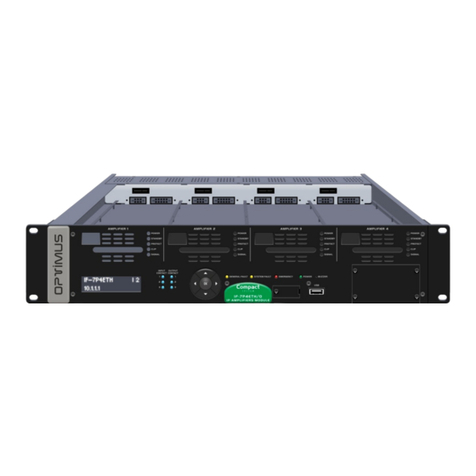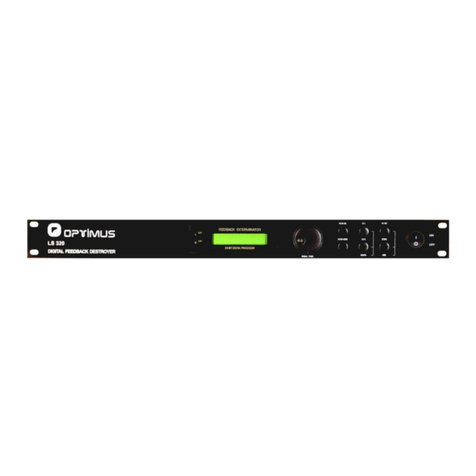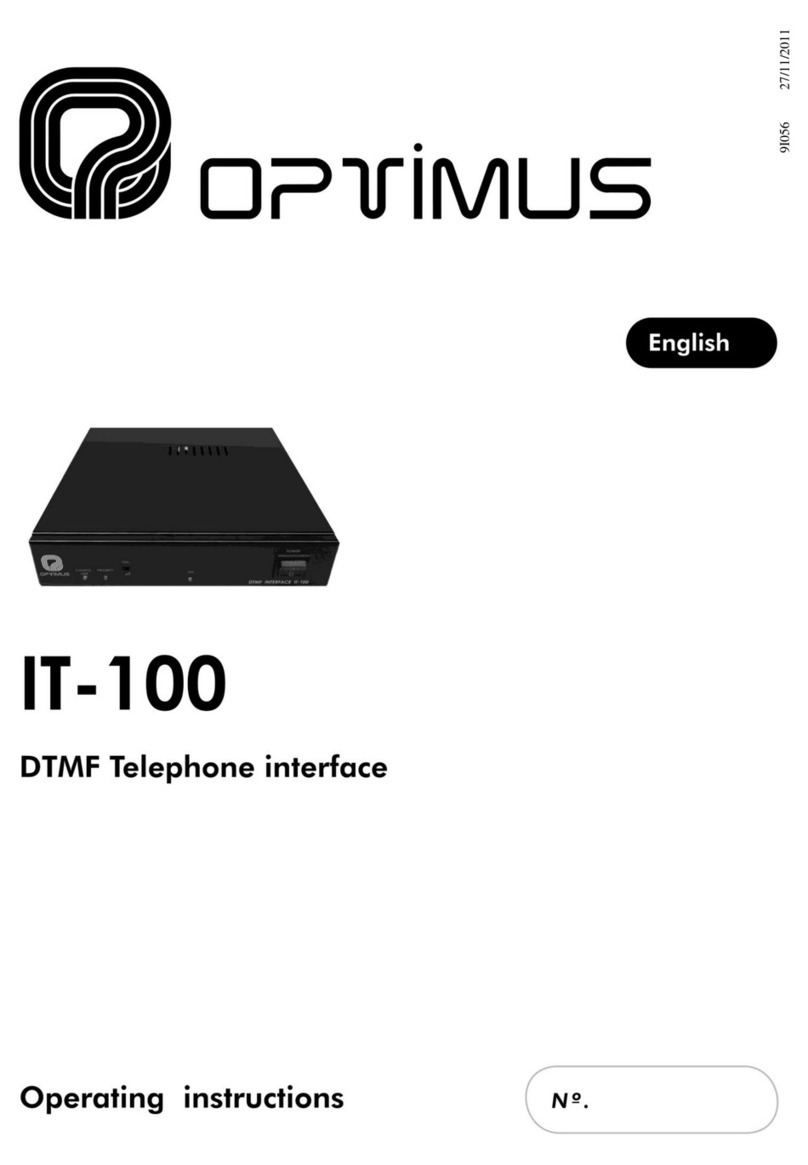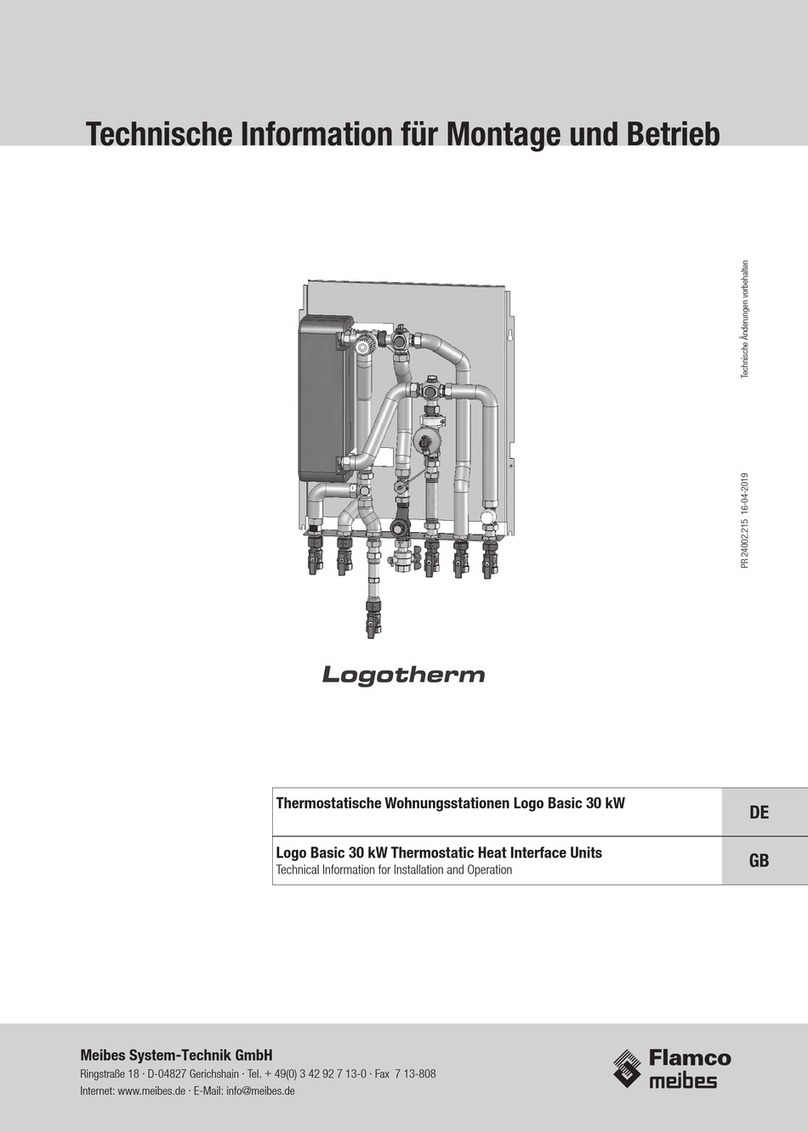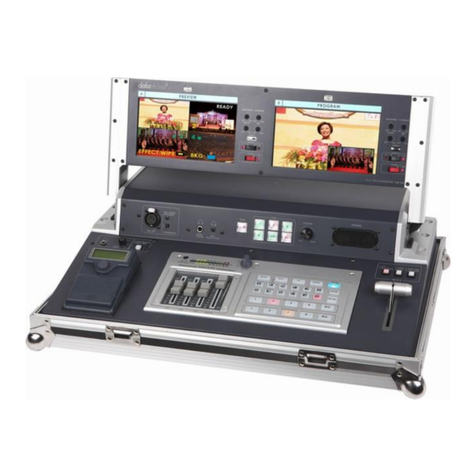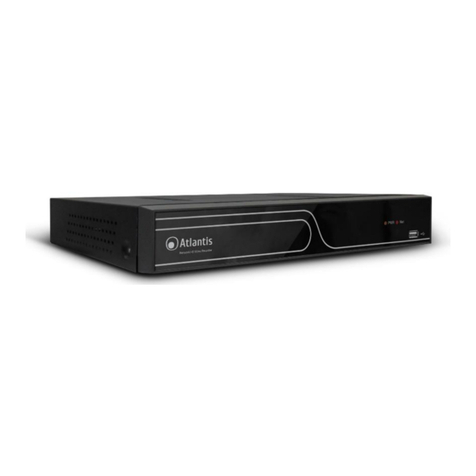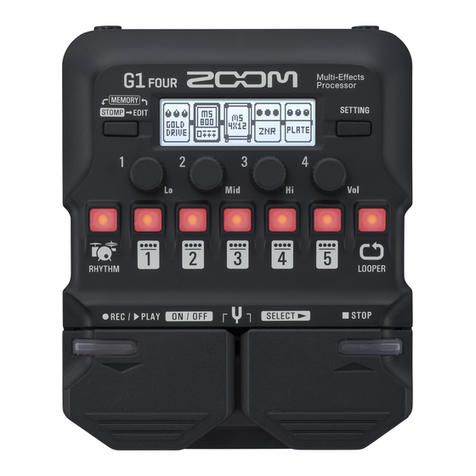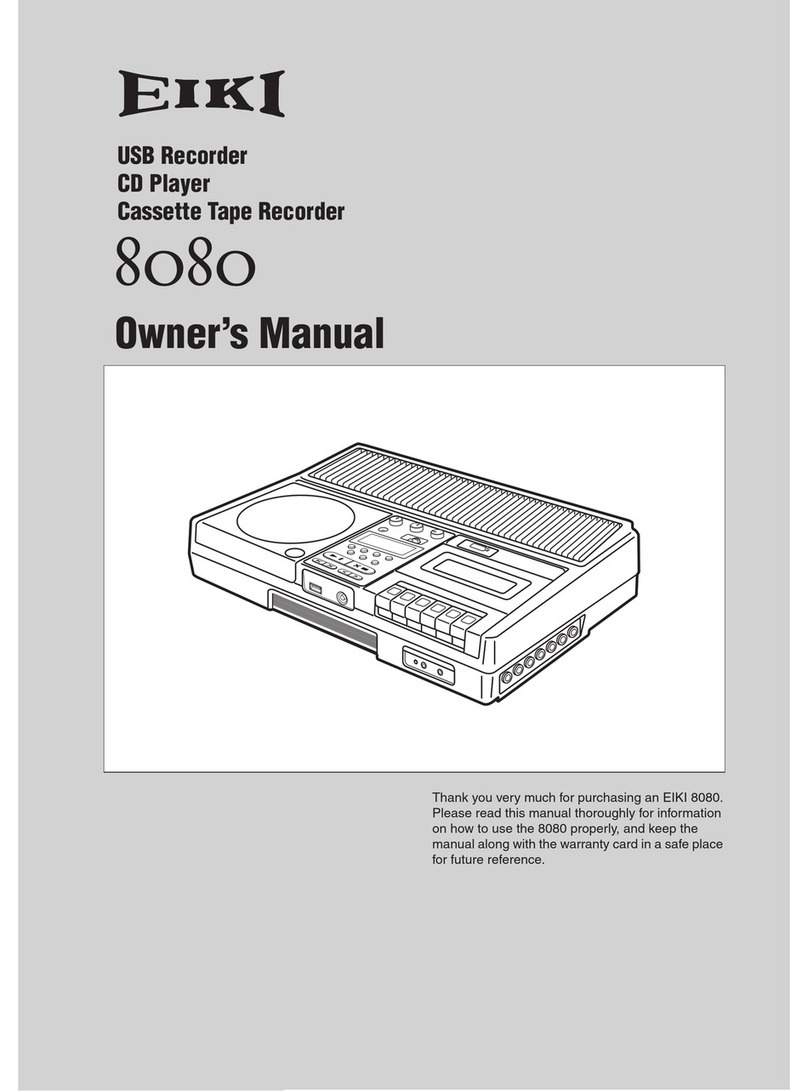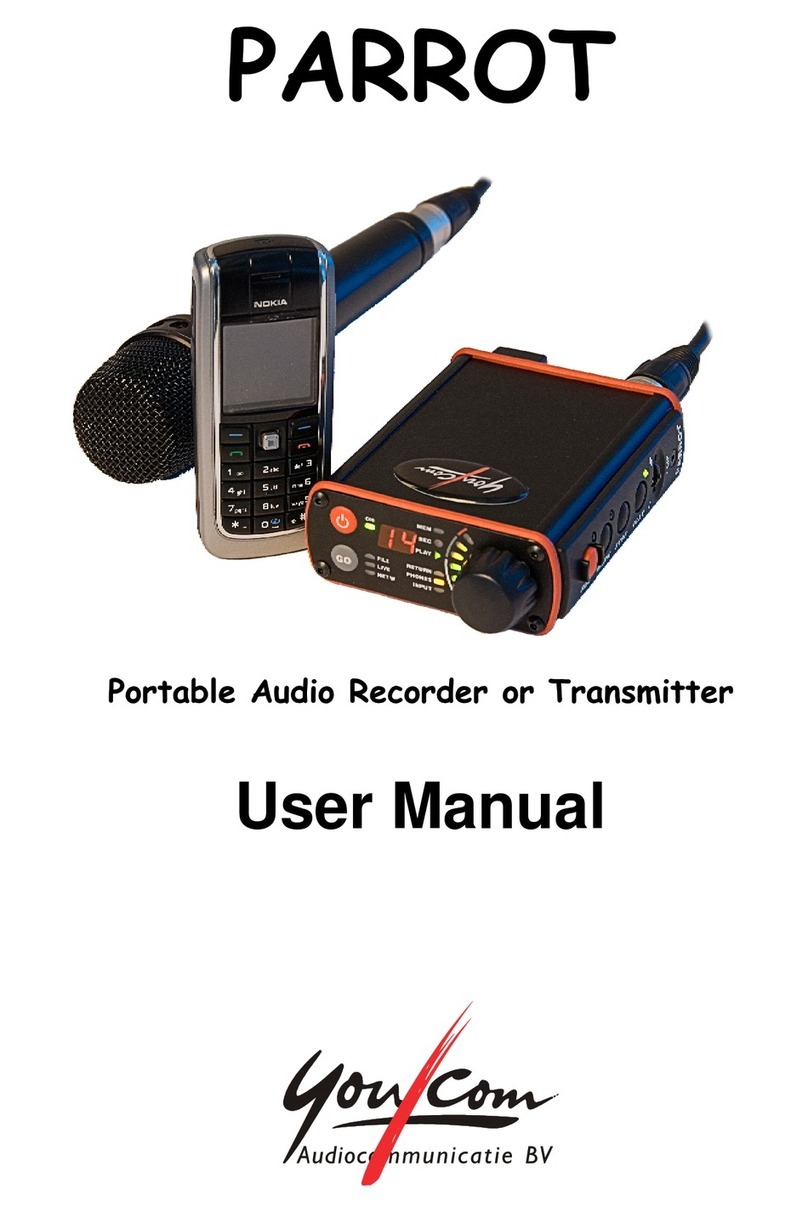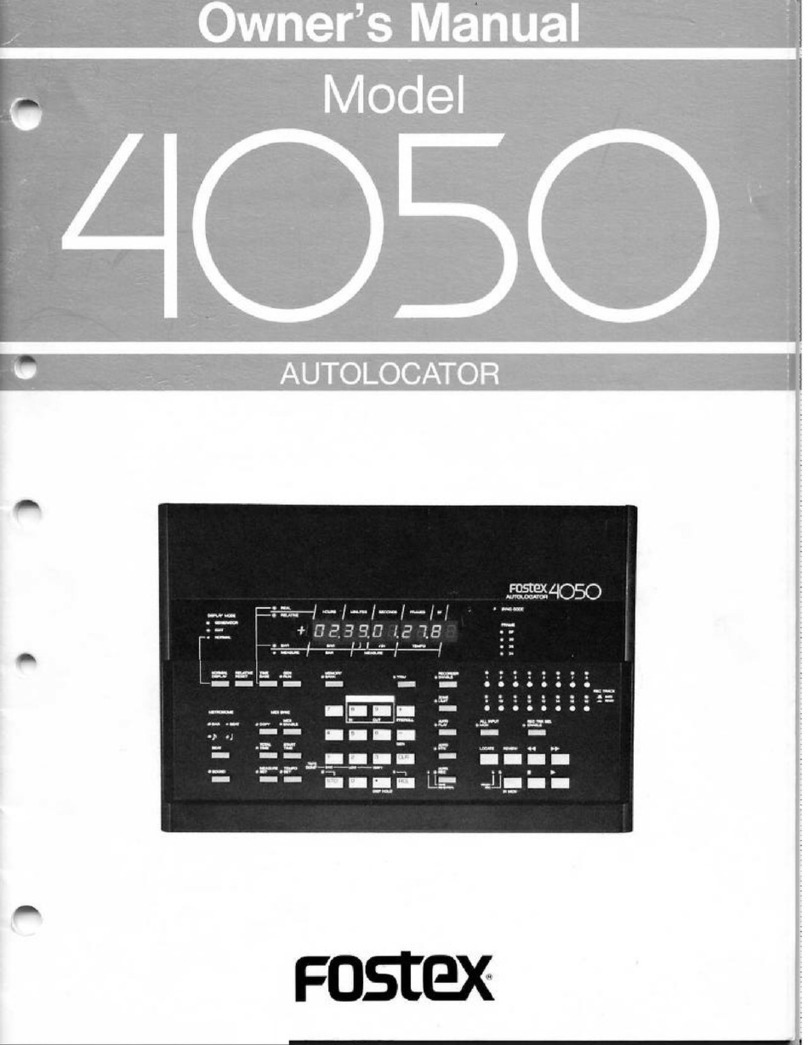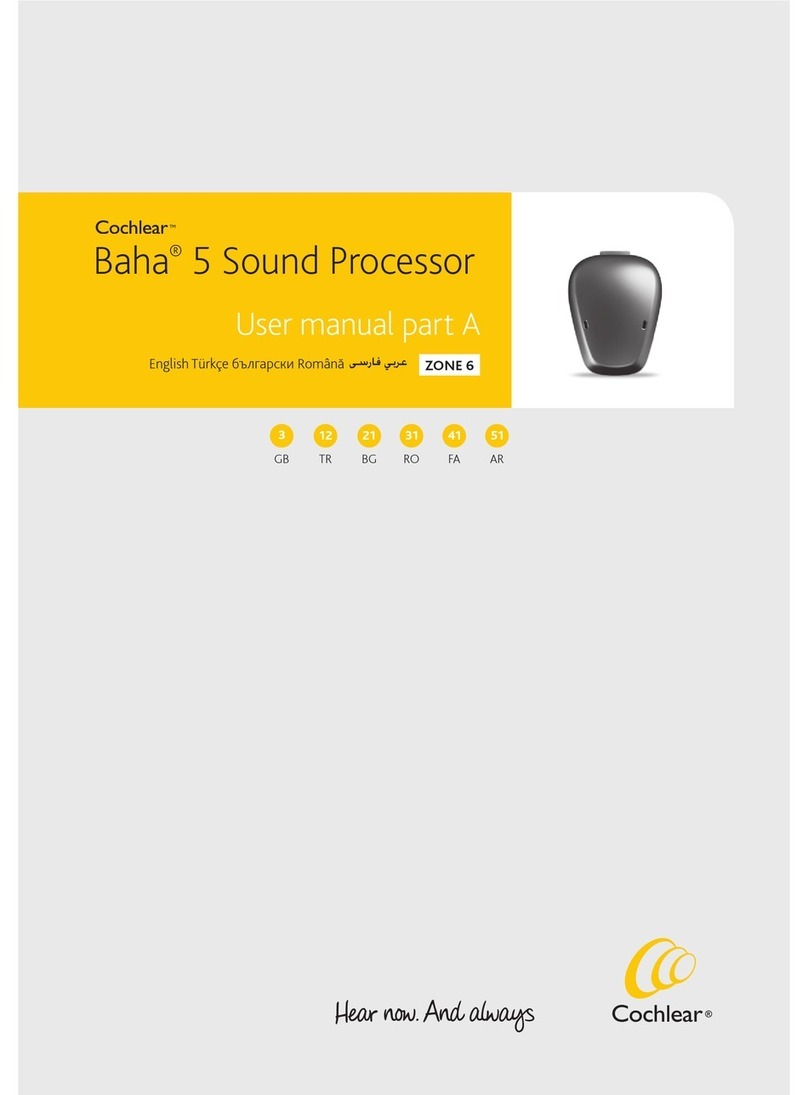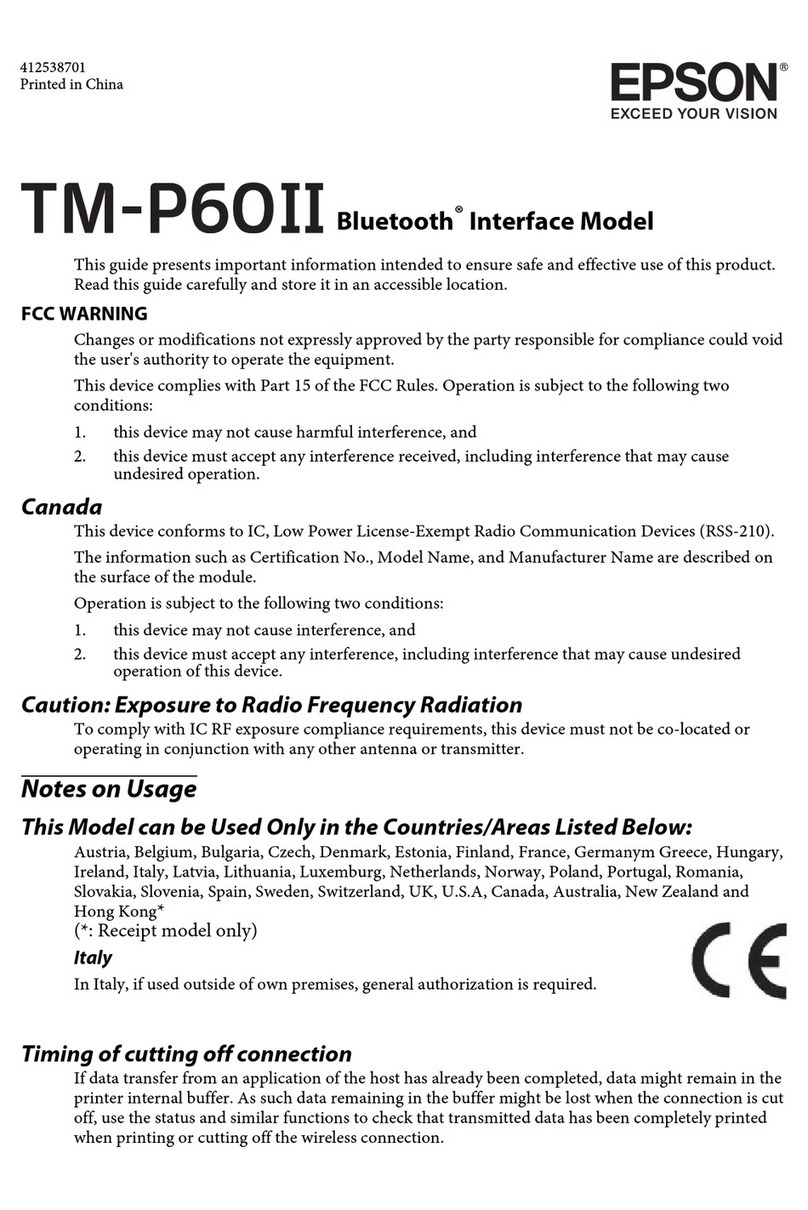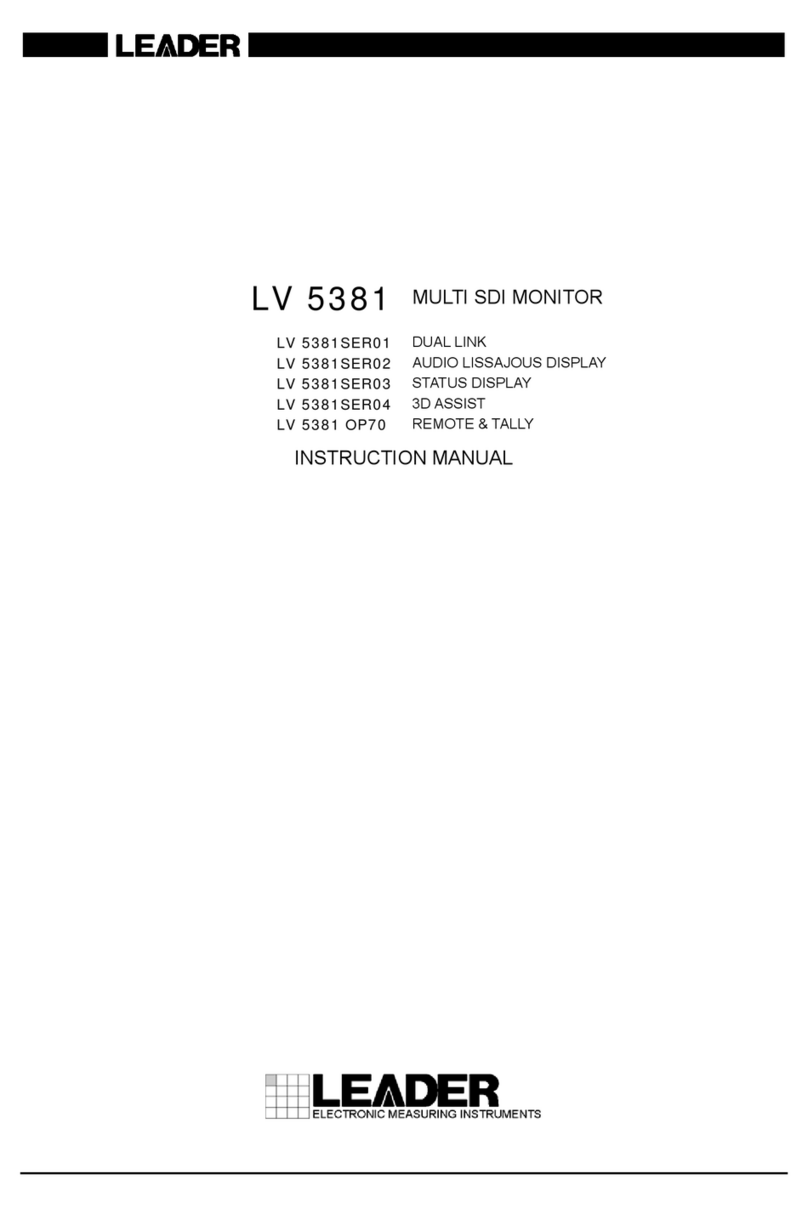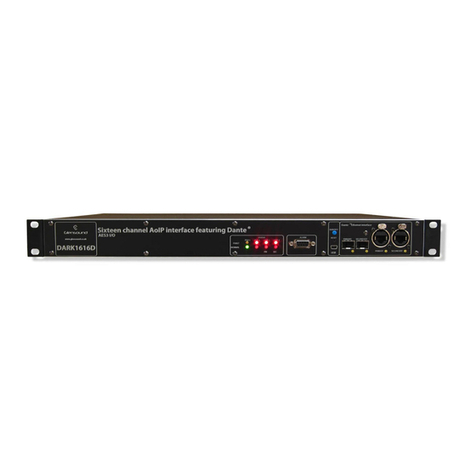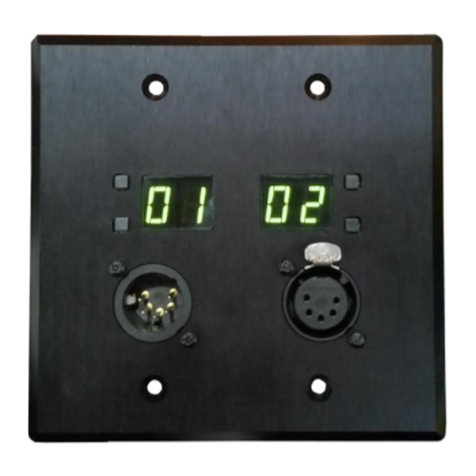Optimus IF-8P4ETH/0 User manual

9I334 15/05/2023 V6.0.001

IF-8P4ETH version 6.0.001 ENG
2
IP audio interface
for 4 amplifier modules
IF-8P4ETH/0
4ETH
R + D Department
SAFETY INSTRUCTIONS
IMPORTANT:
Read the safety instructions carefully.
Keep this manual for future reference.
Unplug the equipment during thunderstorms and when it will not be used for a long period of time.
Always use pre-prepared cables to avoid risk of electric shock or fire. If in doubt, consult a qualified installer.
Do not use the appliance in damp places or near liquids. Do not install the appliance near heat sources. Do not block the
ventilation openings.
When necessary, remove dust with a dry cloth. Do not use solvents such as alcohol. Keep the device clean and free of dust.
Qualified personnel are required to perform all maintenance operations.
Note: The information provided in this manual does not include details of design, production or equipment variations. Nor does it
include possible hazardous situations during installation, operation or maintenance. If you need special assistance beyond the
manual, please contact our technical service.

IF-8P4ETH version 6.0.001 ENG
3
IP audio interface
for 4 amplifier modules
IF-8P4ETH/0
4ETH
R + D Department
Table of Contents
1. INTRODUCTION ......................................................................................................................................5
2. FRONT VIEW...........................................................................................................................................7
3. BACK VIEW.............................................................................................................................................8
4. PLACEMENT OF THE BATTERY .................................................................................................................9
5. INSERTION AND REMOVAL OF AMPLIFIER MODULES .............................................................................10
5.1. Inserting the amplifier module............................................................................................................10
5.2. Removal of the amplifier module........................................................................................................13
6. CONNECTIONS......................................................................................................................................15
6.1. Connection IP......................................................................................................................................15
6.2. Connection in installations with redundant Ethernet network............................................................15
6.3. Connection of loudspeaker lines .........................................................................................................16
6.3.1. Example of connection of loudspeaker lines to 4 amplifiers.................................................. 16
6.3.2. Example of connection of loudspeaker lines to 3 zone amplifiers and a backup amplifier ... 17
6.3.3. Example of connection of loudspeaker lines with zones A/B ................................................. 18
6.4. Input contacts INPUT CT 1, 2 and 3 .....................................................................................................19
6.5. Output contacts OUTPUT CT 1A, 1B, 2A, 2B, 3A y 3B...........................................................................19
6.6. FAIL contacts.......................................................................................................................................19
6.7. CAN bus ..............................................................................................................................................20
6.7.1. CAN bus connection between IF-8P4ETH/0 and slave units IF-8P4/0E .................................. 21
6.7.2. Audio connection between IF-8P4ETH/0 and IF-8P4/0E slave units (requires optional IF-PLINK
module) ............................................................................................................................................. 21
6.7.3. Connecting NS-CAN noise sensors to IF-8P4ETH/0 ................................................................ 22
6.7.4. Connection of CAN desks (MD-30C and ME-200C) to IF-8P4ETH /0 ...................................... 22
6.7.5. Connection of CAN desks (MD-30C and ME-200C) with VOICE ALARM* functionality..........23
6.8. Connection of analog microphone desks to IF-8P4ETH/0 (MD-18, MD-15)..........................................24
6.9. Connecting a music source to the IF-8P4ETH /0 ..................................................................................24
6.9.1. Connection of a stereo music source ..................................................................................... 24
6.9.2. Connection of a monaural music source ................................................................................25
6.10. Connection of the optional additional input and output contact module IF-PCT (10 input contacts
and 4 output contacts). ..............................................................................................................................25
6.10.1. Input contacts 1 to 10 ........................................................................................................ 25
6.10.2. Output contacts 1A, 1B, 2A, 2B, 3A , 3B, 4A and 4B ..........................................................26
6.11. Connection to the power grid .........................................................................................................27
6.12. 24VDC secondary power supply (only with MP-WDC series amplifiers) ..........................................28
6.13. Front USB connector: Music playback from an external memory stick ...........................................29
7. FUSE PLACEMENT OF THE AMPLIFIER MODULE IN MP-WDC AMPLIFIERS................................................30

IF-8P4ETH version 6.0.001 ENG
4
IP audio interface
for 4 amplifier modules
IF-8P4ETH/0
4ETH
R + D Department
ATTENTION. This is Class A equipment. In a domestic environment it may cause radio interference. In this case the user
should take appropriate measures.
8. EQUIPMENT START-UP .........................................................................................................................31
8.1. Configuration of the IF-8P4ETH/0 network addresses.........................................................................33
9. DISPLAY AND FRONT PANEL OPERATIONS .............................................................................................35
9.1. Menu structure ...................................................................................................................................35
9.2. Operations from the front controls of IF-8P4ETH ................................................................................36
9.2.1. Check the firmware version of the equipment.......................................................................36
9.2.2. Check the IP address and gateway of the equipment ............................................................ 36
9.2.3. Display of alarms ....................................................................................................................36
9.2.4. Cancellation of alarms ............................................................................................................ 36
9.2.5. Modify the volume of the zones............................................................................................. 36
10. SYSTEM ALARMS ..................................................................................................................................36
11. TECHNICAL CHARACTERISTICS...............................................................................................................37
12. MP-WD1 SERIES MODULAR AMPLIFIERS................................................................................................38
13. MP-WDC SERIES MODULAR AMPLIFIERS ...............................................................................................39
14. NETWORK SPECIFICATIONS ON OPTIMAX 2 SYSTEMS ............................................................................40
15. SOFTWARE AND FIRMWARE VERSIONS ................................................................................................. 44
16. DOCUMENT VERSION TRACKING...........................................................................................................44
17. WARRANTY ..........................................................................................................................................45

IF-8P4ETH version 6.0.001 ENG
5
IP audio interface
for 4 amplifier modules
IF-8P4ETH/0
4ETH
R + D Department
1. INTRODUCTION
Audio interface with IP connection for OPTIMAX 2 systems.
It has four slots to accommodate MP-WD1 and MP-WDC series amplifiers (amplifiers not included) offering a wide range of power
ratings:
MP-WD1 Series
MP-120WD1
120W
MP-150WD1
150W
MP-250WD1
250W
MP-300WD1
300W
MP-460WD1
460W
The MP-WD1 series amplifiers are powered at 100-240VAC
50/60Hz through the IF-8P4ETH/0 chassis.
MP-WDC Series
MP-60WDC
60W
MP-120WDC
120W
MP-150WDC
150W
MP-250WDC
250W
MP-300WDC
300W
MP-460WDC
460W
The MP-WDC series amplifiers can be powered either at 100-
240VAC 50/60Hz through the IF-8P4ETH/0 chassis, or at
24VDC through an individual power strip for each amplifier
module.
Each amplifier incorporates short-circuit/overload protection on the speaker line, as well as thermal protection to prevent failure
due to overheating.
Optionally, the IF-8P4ETH/0 can have 4 analog audio inputs by incorporating the IF-PIA4 module, and 10 input contacts and 4 output
contacts by incorporating the IF-PCT module.
It is possible to expand the capacity of the IF-8P4ETH by adding IF-8P4/0E slave units (4 additional amplifiers per slave unit, up to a
maximum of 10 IF-8P4/0E units). To do so, the IF-8P4ETH/0 must be equipped with the optional IF-PLINK module (not included).

IF-8P4ETH version 6.0.001 ENG
6
IP audio interface
for 4 amplifier modules
IF-8P4ETH/0
4ETH
R + D Department
Main characteristics:
Dual Ethernet connection for installations with redundant
network systems. The connection is constantly monitored
and switches automatically if necessary.
Double power supply:
-Full range 100-240Vac 50/60 Hz
-24VDC secondary power supply (only with MP-WDC
series amplifiers).
Space for four modular amplifiers, incorporating DSP and
monitoring functions.
DSP functions:
Volume, bass and treble controls or 10-band graphic
equalizer via PA Manager software.
Monitoring functions:
-Loudspeaker line supervision: For this purpose, the
equipment injects different frequencies into the
loudspeaker line, frequencies that are picked up and
analyzed to determine the status of the line (open line,
short circuit, low impedance, high impedance or line in
good condition).
-Amplifier status monitoring, analyzing the audio signal
to detect whether the power amplifier has entered
protection or is shut down.
Each amplifier has 2 loudspeaker line outputs marked A
and B. The rated power of the amplifier is divided between
both line outputs.
Input for backup amplifier for each channel
Front USB input for music.
CAN bus for communication with peripherals (NS-CAN).
Digital audio reception through IP connection (4
simultaneous channels).
Receiving and sending control data via IP connection.
Configuration of the IP address in Flash memory, through
software.
Supervision of equipment operation through software
and/or basic TELNET or SSH (Secure Shell) functions.
Constant (IP) notification of equipment status via "Heart
Beat" (life signal).
Pre-recorded messages resident in the equipment,
remotely updatable through PA Manager software via IP,
located in Micro SD memory (16 GB).
Monitoring functions:
-of the primary and secondary feeds.
-of the input contacts.
-of the prerecorded messages.
Communication with external systems:
-VoIP: direct call reception from any VoIP digital
telephone using standard SIP protocols. Incorporates
zone selection by sending DTMF tones. It offers the
possibility of password-protected access.
-Direct integration (XML, API/DLL and SNMP).
Allows to house the ME-200D module (front evacuation
panel).
Optionally, it can include four local analog inputs for
program or priority, with software-configurable audio
level at 0 dB or -20 dB (IF-PIA4 module).
Optionally, it can include 10 input contacts and 4 output
contacts (IF-PCT module).

IF-8P4ETH version 6.0.001 ENG
7
IP audio interface
for 4 amplifier modules
IF-8P4ETH/0
4ETH
R + D Department
2. FRONT VIEW
1. Slot 1 for modular amplifier (amplifier not included).
2. Slot 2 for modular amplifier (amplifier not included).
3. Slot 3 for modular amplifier (amplifier not included).
4. Slot 4 for modular amplifier (amplifier not included).
5. POWER indicator LED. Power indicator of the amplifier
module.
6. STANDBY indicator LED on the amplifier module. Indicates
that the power amplifier is in low power mode.
7. PROTECT indicator LED on the amplifier module.
Illuminates when Protection is activated, due to an
overload or short-circuit in the speaker line, or excessive
heating of the power amplifier.
8. CLIP indicator LED on the amplifier module. Indicates that
the power amplifier reaches the maximum output voltage
(100V).
9. SIGNAL indicator LED of the amplifier module. Indicates
audio signal reception at the power amplifier input.
10. Display.
11. LED indicators of activated input contacts.
12. LED indicators of activated output contacts.
13. Navigation and OK/CANCEL selection keys.
14. GENERAL FAULT indicator light (see section 0).
15. SYSTEM FAULT indicator light (see section 0).
16. EMERGENCY indicator light. Lights up when the system is
in emergency mode.
17. Internal jumper for deactivation of the audible alarm in
the event of a SYSTEM FAULT (see section 0).
18. CONSOLE connector. Mini USB connector. Allows system
monitoring. Specialized personnel only.
19. POWER SUPPLY indicator light. Indicates that the control
module is powered.
20. Front USB for music input. Allows music playback from
external memory.
21. Buzzer. Acoustic indicator. Indicates receipt of a system
alarm.
22. Front blind panel. Allows the incorporation of the module
ME-200D (evacuation panel).
Figure 1

IF-8P4ETH version 6.0.001 ENG
8
IP audio interface
for 4 amplifier modules
IF-8P4ETH/0
4ETH
R + D Department
3. BACK VIEW
1. Control module mains fuse (1A).
2. ON/OFF switch of the control module.
3. Mains power input 100-240V AC 50/60 Hz.
4. INPUT CT input contacts 1, 2 and 3 (see section 6.4).
5. Output contacts OUTPUT CT 1A, 1B, 2A, 2B, 3A and 3B (see
section 6.5).
6. CAN BUS (see section 6.7). Data communication bus
between IF-8P4ETH/0 and CAN peripherals (NS-CAN), or
between IF-8P4ETH/0 and IF-8P4/0E slave units.
7. FAIL indicator relay. indicates system failure (see section
6.6).
8. Slot 4 amplifier speaker line connection and BCK 4 IN input
for connecting the backup amplifier of amplifier 4 (see
section 6.3).
9. Slot 3 amplifier speaker line connection and BCK 3 IN inputs
for connecting the backup amplifier of amplifier 3 (see
section 6.3).
10. Slot 2 amplifier speaker line connection and BCK 2 IN inputs
for connecting the backup amplifier of slot 2 amplifier (see
section 6.3).
11. Slot 1 amplifier speaker line connection and BCK 1 IN inputs
for connecting the backup amplifier of slot 1 amplifier (see
section 6.3).
12. ETH A connector. It is used to connect the unit to the IP
network (see section 6.1).
It has 2 LED indicators:
Green LED: On indicates connection to the network.
Flashing indicates sending or receiving data.
Yellow LED: Network speed. On indicates a network speed
of 100Mbps. Off indicates a network speed of 10Mbps (it is
highly recommended to use a transmission speed of 100
Mbps.
13. ETH B connector. Used in a redundant network as a
secondary connection to the IP network (see section 6.2).
14. Micro SD memory (16 GB). Stores local pre-recorded
messages.
15. Grounding.
16. POWER SUPPLY. 24VDC secondary power supply input for
the control module (see section 6.12).
17. POWER LED. Power indicator of the control module.
18. Battery compartment (see section 4).
19. 24VDC power supply fuse of amplifier 4 (see section 7).
Used only in MP-WDC series amplifiers.
20. 24VDC power supply input of amplifier 4 (see section 6.12).
Used only in MP-WDC series amplifiers.
21. 24VDC power supply fuse of amplifier 3 (see section 7).
Only in MP-WDC series amplifiers.
22. 24VDC power supply input of amplifier 3 (see section 6.12).
Only in MP-WDC series amplifiers.
23. 24VDC power supply fuse of amplifier 2 (see section 7).
Only in MP-WDC series amplifiers.
24. 24VDC power supply input of amplifier 2 (see section 6.12).
Only in MP-WDC series amplifiers.
25. 24VDC power supply fuse of amplifier 1 (see section 7.1.2).
7). Only in MP-WDC series amplifiers.
26. 24VDC power supply input of amplifier 1 (see section 6.12).
Only in MP-WDC series amplifiers.
27. Space for the optional IF-PLINK module. This module is
required to expand the capacity of the IF-8P4ETH by adding
IF-8P4/0E slave units (see section 6.7.2).
28. Slot 1 for expansion. Allows insertion of the optional IF-PCT
module (10 input contacts and 4 output contacts). See
section 6.10.
29. Slot 2 for expansion. Allows insertion of the optional IF-
PIA4 module (4 analog audio inputs). See sections 6.7.4,
6.7.5, 6.8 y 6.9.
Figure 2

IF-8P4ETH version 6.0.001 ENG
9
IP audio interface
for 4 amplifier modules
IF-8P4ETH/0
4ETH
R + D Department
Safe handling with batteries:
•Warning! Improper use of battery may lead to explosion. Replace the batteries with the same or equivalent type only.
•Batteries may endanger life if swallowed. If a battery is swallowed, seek medical assistance immediately.
•Before inserting the batteries, check whether the contacts in the device and batteries are clean and, if necessary, clean
them.
•Only use new batteries.
•Do not use rechargeable batteries
•Never try to recharge normal batteries. There is a risk of explosion!
•Never expose batteries to heat sources (e.g. radiators) or direct sunlight. There is an increased risk of leakage!
•Never short-circuit the batteries.
•Never throw batteries into a fire.
•Do not disassemble or deform batteries.
•If the equipment is not going to be used for long periods, remove the battery.
•Remove leaking batteries from the device immediately. If battery acid leaks out it is essential to avoid contact with the skin,
eyes and mucous membranes! If the acid does come into contact with skin, immediately rinse the affected areas with plen-
ty of clear water and consult a doctor immediately. There is a risk of acid poisoning and acid burns!
•Remove exhausted rechargeable battery from the device immediately! There is an increased risk of leakage
•Do not throw used batteries into the household waste. The batteries must be deposited in a collection point for used bat-
teries.
4. PLACEMENT OF THE BATTERY
From the PA Manager software it is possible to create message time schedules and volume time schedules, and send these schedules
to the equipment. In this way, a server PC is not necessary to activate the time schedules, but the equipment activates them
automatically.
For this purpose, the equipment incorporates a RTC (Real-Time Clock) whose function is to maintain the current time. To keep the
RTC powered even if the equipment is turned off, a 3V lithium battery type CR2032 supplied with the equipment must be inserted.
It is advisable to replace the battery of the equipment at least every 5 years.
Battery placement procedure:
1) Disconnect the power supply to the equipment.
2) Open the battery compartment by
removing the screws that hold it.
3) Insert the battery respecting
the polarity indicated in the
drawing in figure 3.
4) Once in place, reinsert
the battery module.
Figure 3

IF-8P4ETH version 6.0.001 ENG
10
IP audio interface
for 4 amplifier modules
IF-8P4ETH/0
4ETH
R + D Department
5. INSERTION AND REMOVAL OF AMPLIFIER MODULES
5.1.Inserting the amplifier module
1. Remove the faceplate.
2. Remove the front panel from the
corresponding slot.
Figure 4
Figure 5
Slot 1
Slot 2
Slot 3
Slot 4

IF-8P4ETH version 6.0.001 ENG
11
IP audio interface
for 4 amplifier modules
IF-8P4ETH/0
4ETH
R + D Department
3. Loosen the front screw located on
the left slot guide as far as the nut will
allow.
4. Push the amplifier module between
the two guides to the bottom of the
slot, connecting it to the IF-8P4ETH/0.
Figure 6
Figure 7

IF-8P4ETH version 6.0.001 ENG
12
IP audio interface
for 4 amplifier modules
IF-8P4ETH/0
4ETH
R + D Department
5. Rest the front of the amplifier module on the IF-8P4ETH/0 chassis. If the module is properly inserted, it should fit with the
inside of the input step.
5. Slide the moving mechanism of the amplifier faceplate to the left until it locks into the hotswap screw. Fix the amplifier module
by means of the hotswap screw.
Figure 8
Figure 9

IF-8P4ETH version 6.0.001 ENG
13
IP audio interface
for 4 amplifier modules
IF-8P4ETH/0
4ETH
R + D Department
6. Finally, place and reattach the faceplate.
5.2.Removal of the amplifier module
1. After removing the faceplate from the IF-8P4ETH/0, loosen
the front retaining screw on the amplifier module you wish
to remove as much as possible.
Figure 10
Figure 11

IF-8P4ETH version 6.0.001 ENG
14
IP audio interface
for 4 amplifier modules
IF-8P4ETH/0
4ETH
R + D Department
2. By pulling slightly on the red tab, disengage the movable
mechanism from the clamping screw.
3. Holding the amplifier module from the front handle, tilt the
amplifier up slightly and pull it out of the IF-8P4ETH/0.
Caution: Before replacing the faceplate, the front screw must be tightened to the guide as far as possible.
Figure 13
Figure 12

IF-8P4ETH version 6.0.001 ENG
15
IP audio interface
for 4 amplifier modules
IF-8P4ETH/0
4ETH
R + D Department
6. CONNECTIONS
6.1.Connection IP
Use the ETH A port (RJ45 connector) and Cat 5e FTP cable to
connect the equipment to the IP network.
6.2.Connection in installations with redundant Ethernet network
In installations with network redundancy, use the ETH A and ETH B ports (RJ45 connectors).
Connection to
Ethernet switch
Figure 14
Ethernet connection
to switch 2
Ethernet connec-
tion to switch 1
Figure 15

IF-8P4ETH version 6.0.001 ENG
16
IP audio interface
for 4 amplifier modules
IF-8P4ETH/0
4ETH
R + D Department
6.3.Connection of loudspeaker lines
The equipment has four channels (one for each amplifier) for the connection of loudspeakers with 100V line transformer.
Each channel has 2 loudspeaker line outputs marked A and B. The rated power of the amplifier is split between both line outputs.
This allows the connection of redundant speaker lines for the same zone.
When working with 100 V lines, it is necessary to remember the following:
The loudspeakers must be provided
with a line transformer.
The total connected power will be the
sum of the powers absorbed by the
loudspeakers and must be between 50%
below and 10% above the rated power of
the amplifier.
The IF-8P4ETH/0 allows monitoring the status of the loudspeaker lines and determining their status (open line, short circuit, low
impedance, high impedance or line in good condition). If a line fault is detected, it automatically disconnects from the corresponding
amplifier, while notifying the system of this occurrence.
Each channel also has a connection for a backup amplifier. The backup amplifier automatically replaces a failed amplifier when the
IF-8P4ETH/0 detects the failure. The backup amplifier must have a power rating equal to or greater than the power
rating of the largest of the amplifiers it is to replace.
The monitoring functionalities, both speaker line and amplifier, are activated and configured using the PA Manager or PA Manager
Configurator software.
6.3.1. Example of connection of loudspeaker lines to 4 amplifiers.
Figure 17
Figure 16
ZONE 4
AMPLIFIER
ZONE 3
AMPLIFIER
ZONE 2
AMPLIFIER
ZONE 1
AMPLIFIER
IF-7P4ETH/0

IF-8P4ETH version 6.0.001 ENG
17
IP audio interface
for 4 amplifier modules
IF-8P4ETH/0
4ETH
R + D Department
ATTENTION:
The backup amplifier must be of a power rating equal to or greater than the power rating of the largest of
the amplifiers to be replaced.
6.3.2. Example of connection of loudspeaker lines to 3 zone amplifiers and a backup amplifier
Figure 18
IF-7P4ETH/0
BACKUP
AMPLIFIER
ZONE 3
AMPLIFIER
ZONE 2
AMPLIFIER
ZONE 1
AMPLIFIER

IF-8P4ETH version 6.0.001 ENG
18
IP audio interface
for 4 amplifier modules
IF-8P4ETH/0
4ETH
R + D Department
6.3.3. Example of connection of loudspeaker lines with zones A/B
This connection allows redundant loudspeaker lines for the
same zone.
The rated power of the amplifier is split between both line
outputs. This allows the connection of redundant loudspeaker
lines for the same zone.
Figure 19
IF-7P4ETH/0
ZONE 4
AMPLIFIER
ZONE 3
AMPLIFIER
ZONE 2
AMPLIFIER
ZONE 1
AMPLIFIER

IF-8P4ETH version 6.0.001 ENG
19
IP audio interface
for 4 amplifier modules
IF-8P4ETH/0
4ETH
R + D Department
6.4.Input contacts INPUT CT 1, 2 and 3
The unit has 3 input contacts (INPUT CT 1, 2 and 3).
Functionality and idle status (NC/NO) are configured through the PA
Manager software. They can be configured as general purpose
contacts, or in evacuation systems, as emergency mode activation
contacts, evacuation message activation...
If desired, the system can monitor these contacts (short circuit or open
line detection).
The detection time of the activation pulse of the input contacts is
configurable through the PA Manager software (0-50-100-200-200-
300-400-400-500-500-1000-1500-2000 milliseconds).
Follow figure 20 for connection. If you wish to monitor the contact,
follow figure 21.
6.5.Output contacts OUTPUT CT 1A, 1B, 2A, 2B, 3A y 3B
The unit has three output contacts. Each contact has two terminals (A
and B). By default, they are configured as dry contacts, through a 3k3
resistor.
Functionality and idle status (NC/NO) are configured via the PA
Manager software. They can be configured as general purpose
contacts, or in evacuation systems as fault notification contacts,
Emergency Mode activated indicator...
For connection follow figure 22.
ATTENTION:
Max. DC charging current: 150 mA.
Max. charging voltage DC or AC peak: 350V.
6.6.FAIL contacts
Relay indicating system failure.
The COM contact linked to the NO contact indicates that there
are no alarms in the system. If, on the other hand, COM is tied to
NC, it indicates equipment shutdown or alarms detected.
Maximum DC load current: 150 mA.
Maximum load voltage DC or AC peak: 350V
EXTERNAL
EQUIPMENT
Figure 22
INPUT CONTACT CONNECTION
WITHOUT SURVEILLANCE
INPUT CONTACT CONNECTION
WITH SURVEILLANCE
Figure 20
Figure 21
Figure 23
Equipment shutdown or
alarms detected
Without
alarms
FAIL RELAY STATUS

IF-8P4ETH version 6.0.001 ENG
20
IP audio interface
for 4 amplifier modules
IF-8P4ETH/0
4ETH
R + D Department
6.7.CAN bus
The IF-8P4ETH/0 communicates with the IF-8P4/0E units via a CAN bus. The data transmission rate between the IF-8P4ETH/0 and the
IF-8P4/0E slave units is 500 kbit/s (default rate).
With the other CAN peripherals in the installation (MD-30C*, ME-200C*, NS-CAN... desks) the baud rate should be 33.333 kbit/s,
which allows a longer distance to be reached when connecting the peripherals to the IF-8P4ETH/0. For this reason, to communicate
with the MD-30C, ME-200C and NS-CAN peripherals, the baud rate of the IF-8P4ETH/0 must be set to 33.333 kbit/s, as explained in
section 8. EQUIPMENT START-UP.
In installations where IF-8P4/0E devices coincide on the same CAN bus
with other CAN peripherals (MD-30C*, ME-200C*, NS-CAN...) it is
necessary to install the external speed adapter model CAN-AV (code
A465AV) to match the transmission speed between devices.
* Attention: To connect MD-30C or ME-200C microphone desks, the IF-
8P4ETH/0 must have the accessory module for auxiliary audio inputs model
IF-PIA4 (code M249PIA) installed.
EQUIPMENT
TRANSMISSION SPEED
IF-8P4ETH/0
33.333 kbit/s or 500 kbit/s (built-
in internal adapter)
IF-8P4/0E
500 kbit/s
MD-30C
33.333 kbit/s
ME-200C
33.333 kbit/s
NS-CAN
33.333 kbit/s
Internal
adapter
Internal
adapter
External CAN bus
speed adapter
(500 kbit/s -
33,333 kbit/s)
model
CAN-AV
(A465AV)
Figure 24
Table of contents
Other Optimus Recording Equipment manuals

